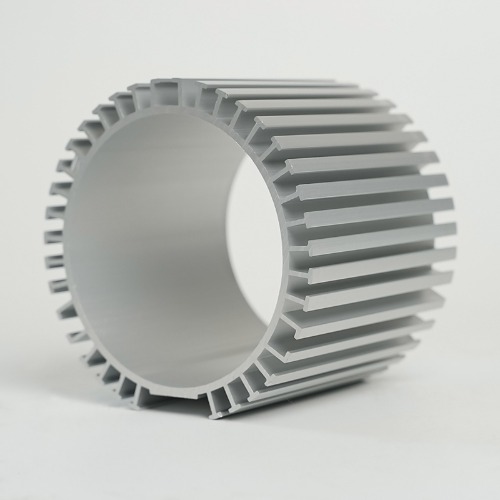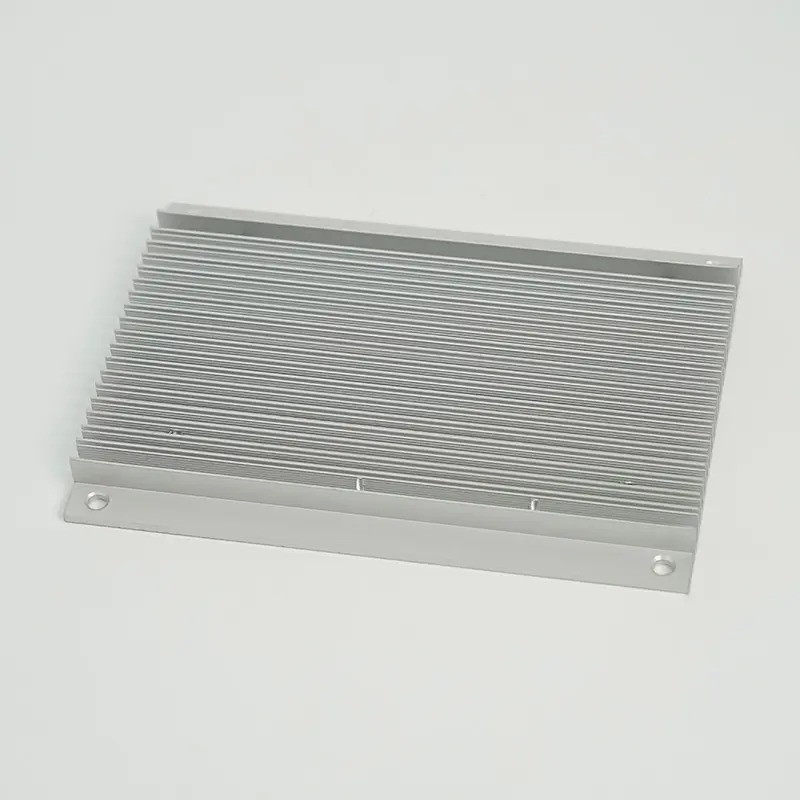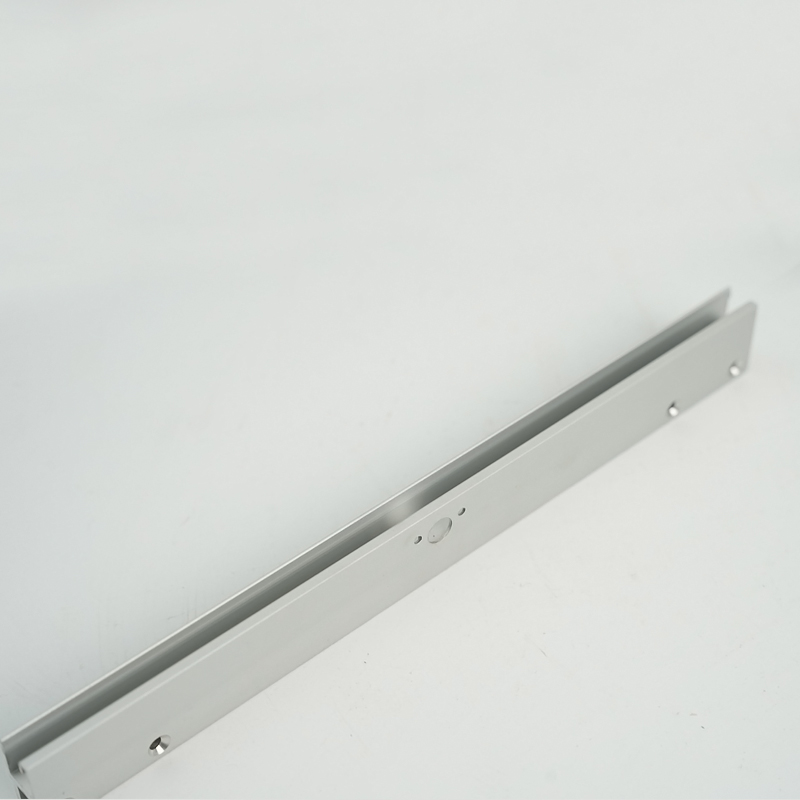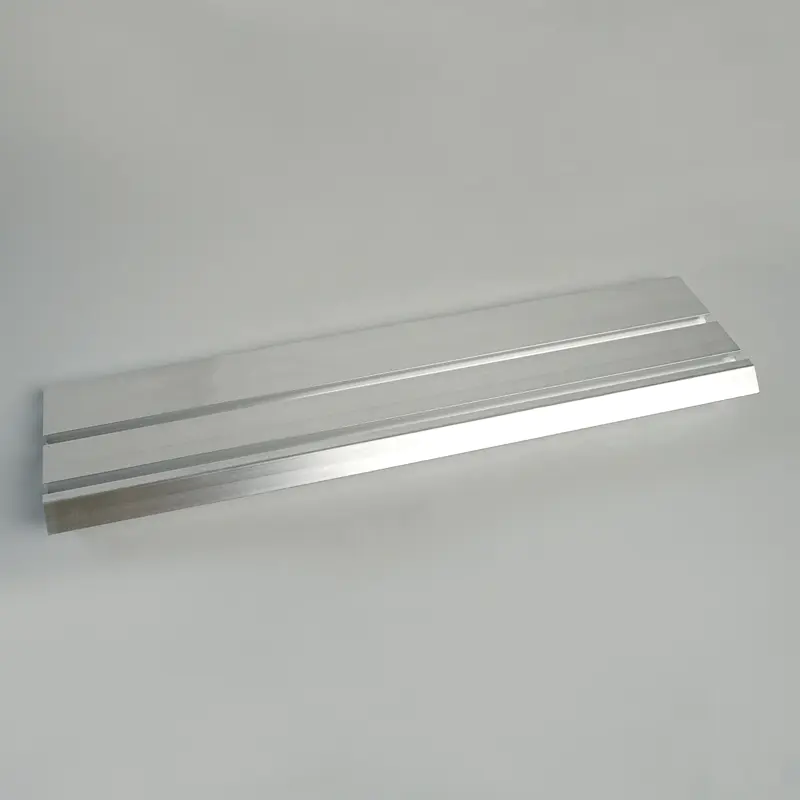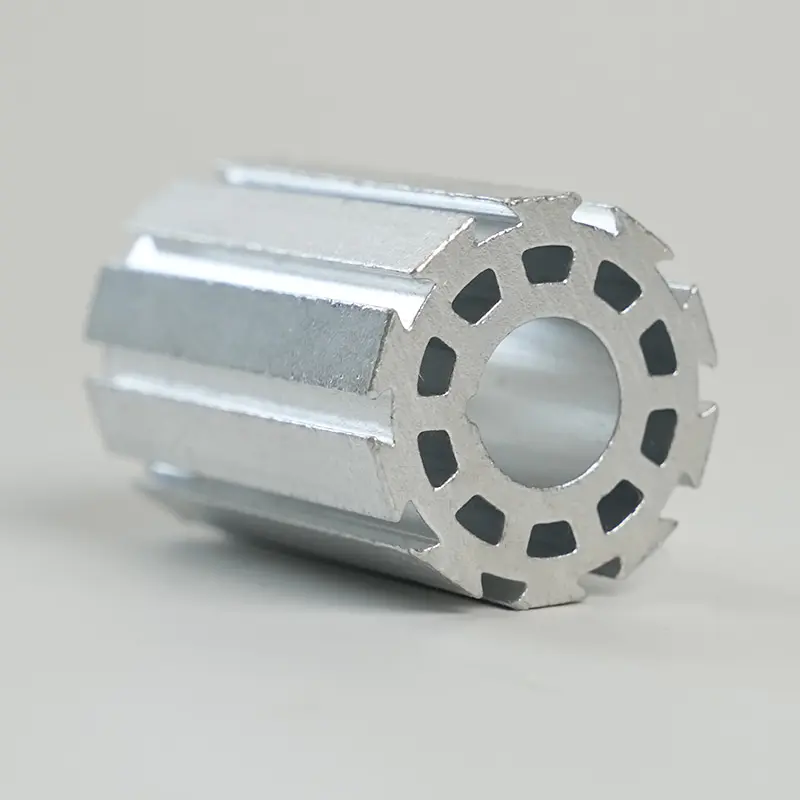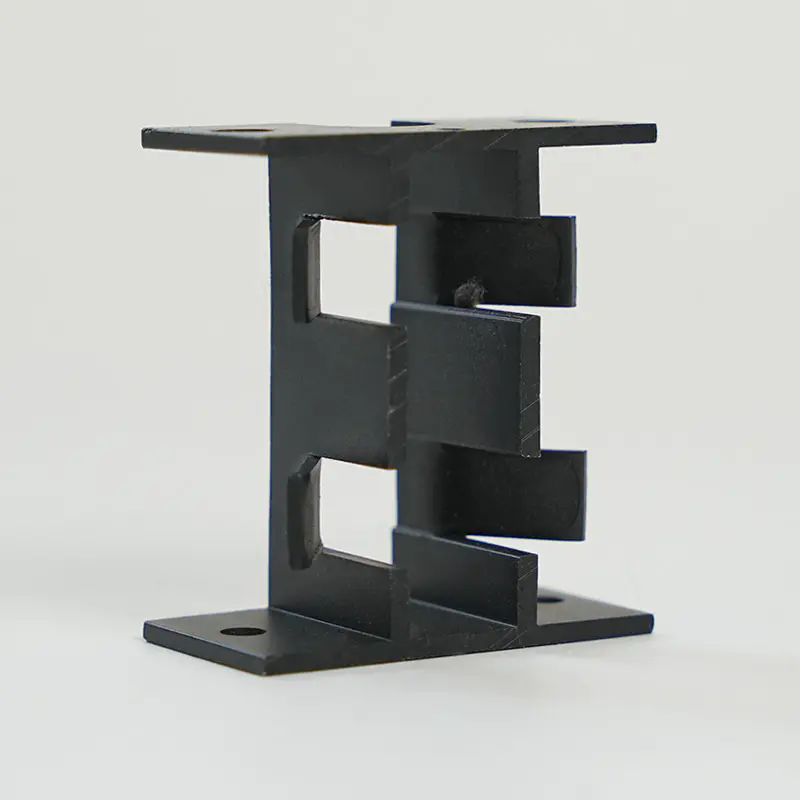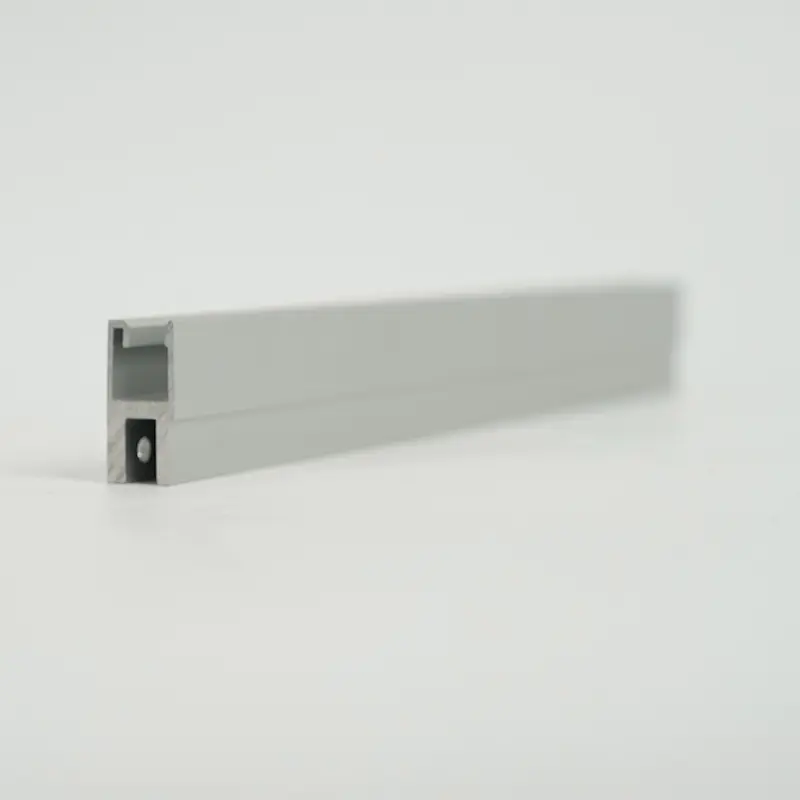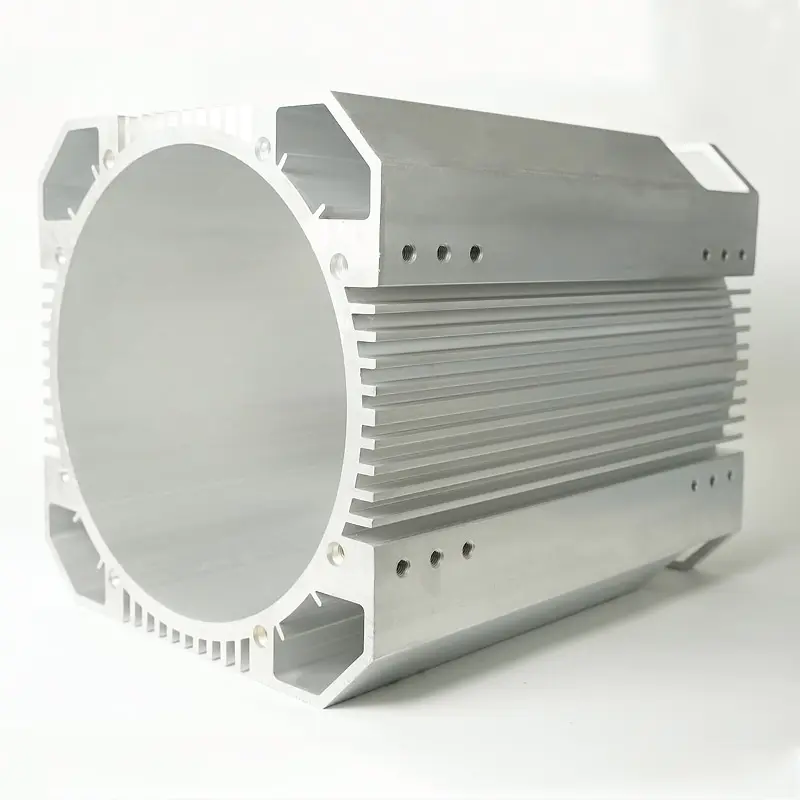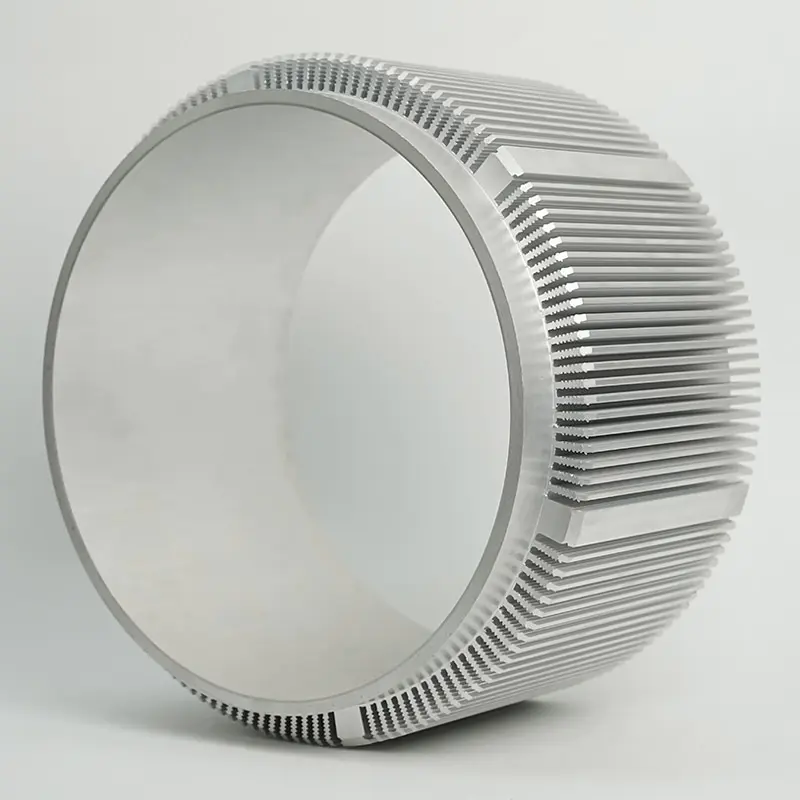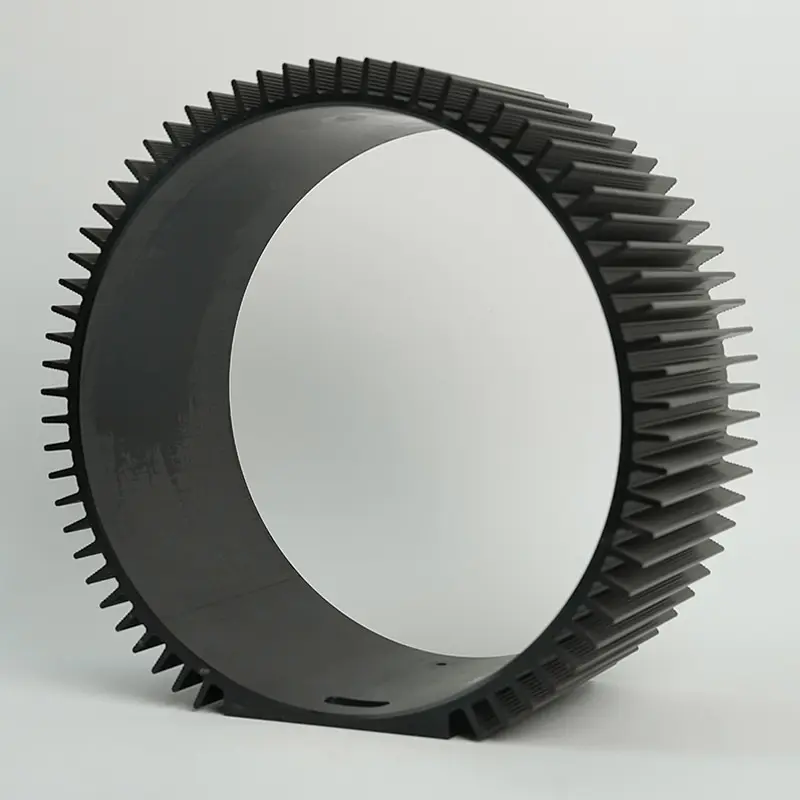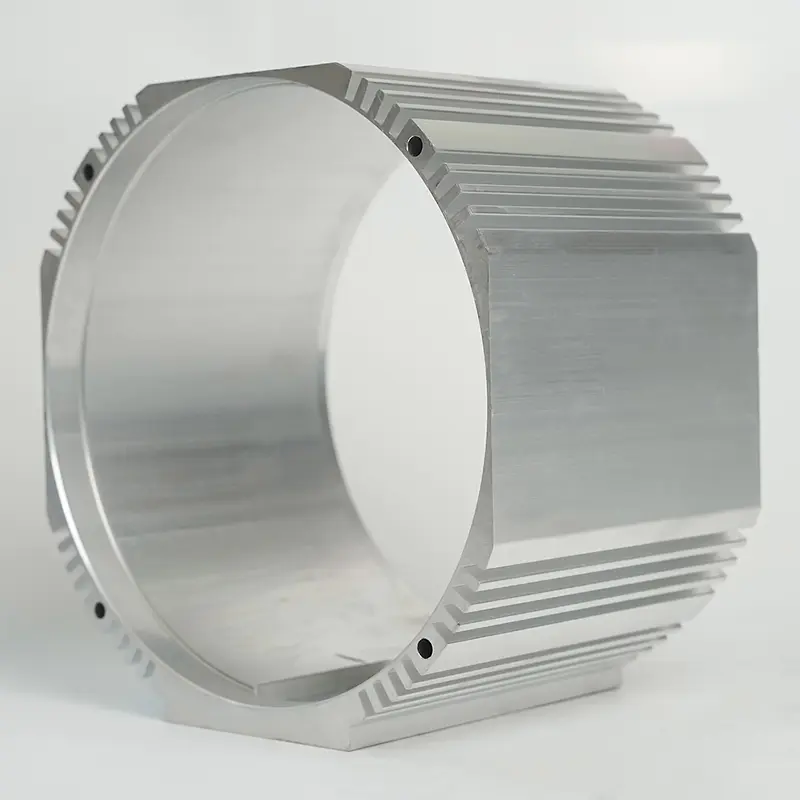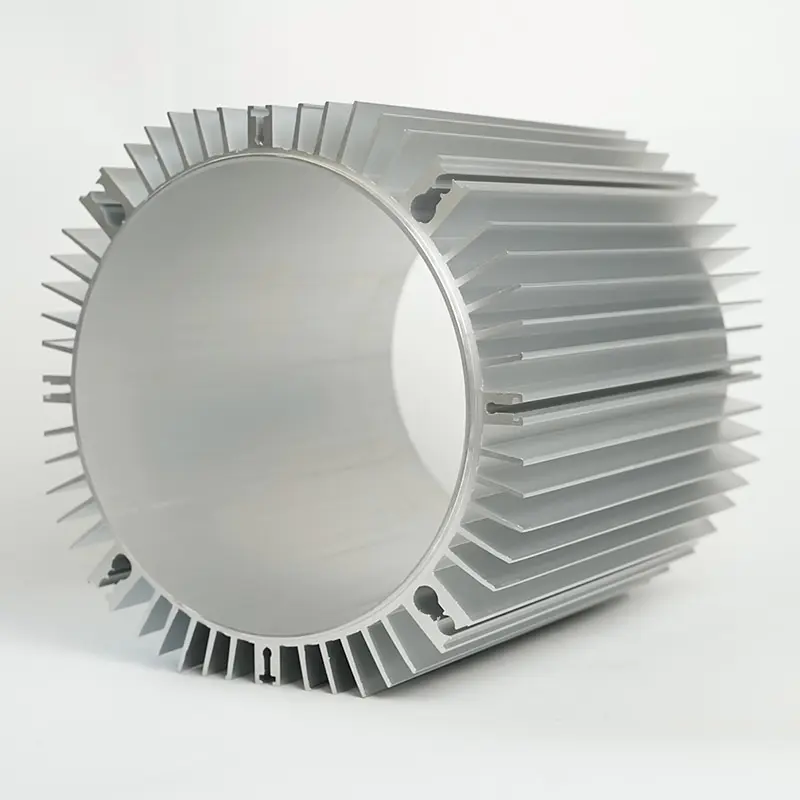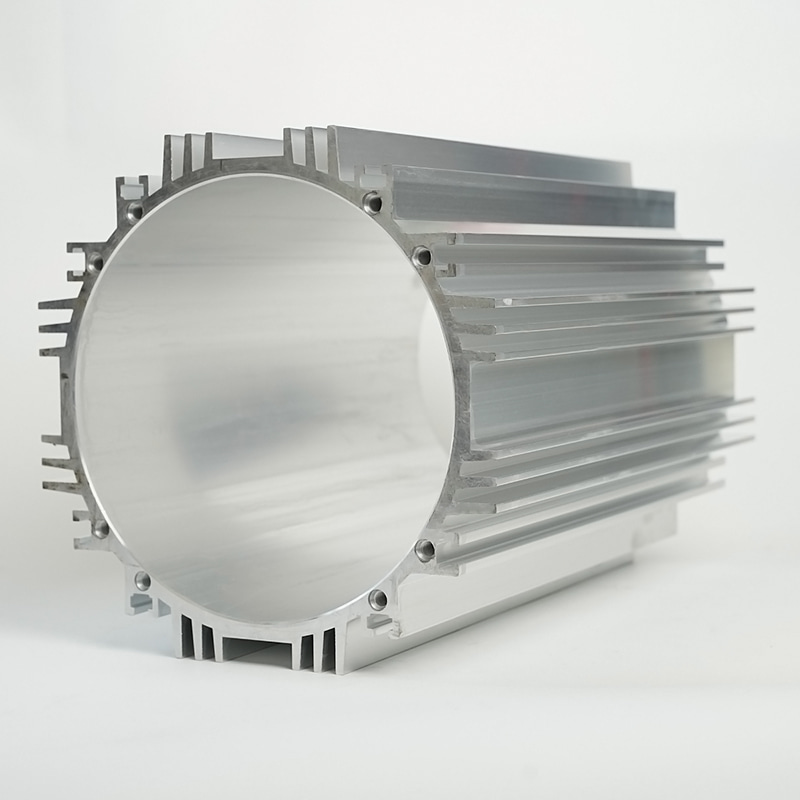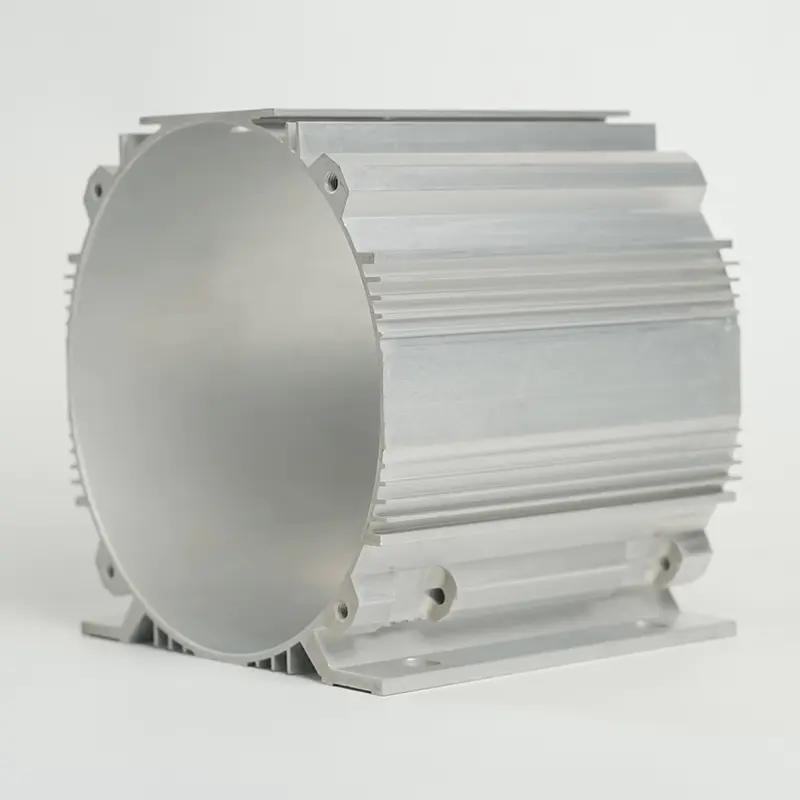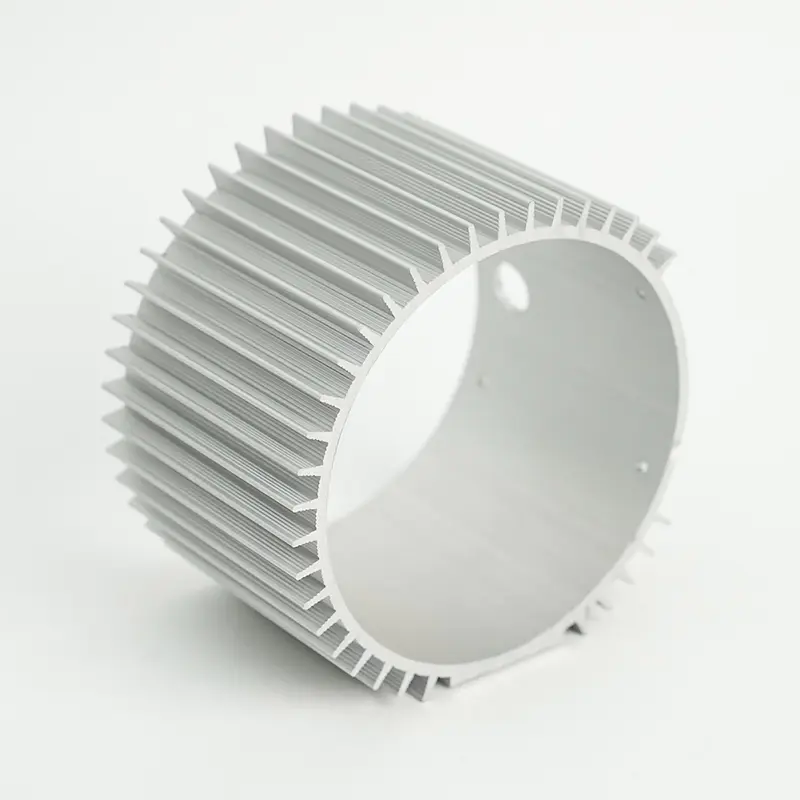Understanding the Critical Role of the Micro Motor Shell
At the heart of countless electronic and mechanical devices lies a component often overlooked yet fundamentally crucial: the micro motor shell. This external casing is far more than a simple cover; it is an integral part of the motor's architecture, responsible for protection, structural integrity, and thermal management. The performance, longevity, and reliability of a micro motor are directly influenced by the quality and design of its shell. As technology advances and devices become smaller and more powerful, the demands placed on these shells intensify, requiring sophisticated materials and precise engineering to meet stringent operational requirements across diverse industries.
Primary Functions of the Motor Casing
The shell of a micro motor performs several non-negotiable functions that are vital for optimal operation. Firstly, it provides robust mechanical protection for the delicate internal components, such as the armature, windings, and magnets, from physical damage, dust, moisture, and other contaminants. Secondly, it acts as a structural framework, maintaining the precise alignment of internal parts, which is essential for minimizing vibration and ensuring efficient power transfer. Thirdly, the shell plays a pivotal role in heat dissipation. During operation, motors generate significant heat, and the shell acts as a heat sink, transferring thermal energy away from the core to prevent overheating and subsequent failure. Furthermore, the shell can also provide electromagnetic shielding in certain applications, reducing interference with nearby sensitive electronics.
The Impact of Shell Design on Overall Performance
A well-designed micro motor shell is a catalyst for enhanced performance, while a poor design can be its Achilles' heel. The geometry, material thickness, and surface features of the shell directly affect the motor's thermal performance, acoustic noise levels, and overall efficiency. For instance, a shell with integrated cooling fins offers a larger surface area for heat exchange, significantly improving thermal management compared to a smooth, flat design. The weight of the shell also contributes to the motor's inertia and, consequently, its dynamic response. Engineers must perform a delicate balancing act, designing a shell that is strong and protective yet as lightweight as possible to not impede the motor's performance. This involves sophisticated design techniques, including topological optimization and finite element analysis (FEA), to simulate stresses and thermal flows before manufacturing.
Choosing the Right Material for Your Micro Motor Shell
Selecting the appropriate material for a micro motor shell is a critical decision that influences nearly every aspect of the motor's functionality. The ideal material must possess a combination of properties, including high strength-to-weight ratio, excellent thermal conductivity, corrosion resistance, and ease of manufacturability. There is no one-size-fits-all solution; the choice depends heavily on the motor's specific application, operating environment, and performance requirements. For example, a motor in a medical device may prioritize lightweight and non-magnetic properties, while one in an automotive application might need extreme thermal resistance and durability.
Common Materials and Their Properties
The most prevalent materials used in micro motor shell construction are aluminum alloys, stainless steel, engineering plastics, and, increasingly, advanced composites. Each category offers a distinct set of advantages and limitations that make it suitable for particular use cases.
Aluminum Alloys
Aluminum is arguably the most popular choice for micro motor shells due to its favorable properties. It is lightweight, which helps in reducing the overall mass of the motor, and it has excellent thermal conductivity, allowing it to efficiently dissipate heat. Aluminum is also relatively easy to machine and cast, making it cost-effective for high-volume production. However, its primary drawback is its lower mechanical strength compared to steel, which can be a limiting factor in high-stress applications.
Stainless Steel
Stainless steel is chosen for applications where strength, durability, and corrosion resistance are paramount. It offers superior mechanical protection and can withstand higher operating temperatures and more hostile environments than aluminum. The trade-off is its significantly higher weight and poorer thermal conductivity, which can complicate thermal management and affect the motor's efficiency and response time.
Engineering Plastics and Composites
For applications demanding extreme weight reduction, electrical insulation, or resistance to corrosion, engineering plastics like PEEK or nylon reinforced with glass or carbon fibers are excellent options. These materials are very lightweight and can be molded into complex shapes, integrating features that would be difficult to machine from metal. While their thermal conductivity is generally poor, innovative design with cooling pathways or the use of thermally conductive fillers can mitigate this issue.
Material Comparison Table
The following table provides a clear, side-by-side comparison of the key properties of the most common micro motor shell materials, illustrating their relative strengths and weaknesses.
| Material | Weight | Thermal Conductivity | Mechanical Strength | Corrosion Resistance | Relative Cost |
|---|---|---|---|---|---|
| Aluminum Alloy | Low | High | Medium | Good (anodized) | Low-Medium |
| Stainless Steel | High | Low | Very High | Excellent | Medium-High |
| Engineering Plastic | Very Low | Very Low | Low-High (varies) | Excellent | Medium |
| Advanced Composite | Very Low | Medium (with fillers) | Very High | Excellent | High |
Design Considerations for High-Performance Motor Housings
Moving beyond material selection, the physical design of the housing is where engineering prowess truly shines. A high-performance durable micro motor housing is not just a tube; it is a precision-engineered component designed to address multiple physical challenges simultaneously. The design process must account for thermal expansion, electromagnetic compatibility, manufacturability, and assembly. For instance, the coefficient of thermal expansion (CTE) of the shell must be compatible with the internal components to avoid inducing stresses or loosening fits as the motor heats up during operation. Ventilation holes, cooling fins, and mounting points must be strategically placed to maximize their effectiveness without compromising the structural integrity of the shell.
Thermal Management Strategies
Effective heat dissipation is arguably the most critical design challenge for a micro motor shell. Excessive heat is the primary cause of motor failure, leading to insulation breakdown, bearing grease degradation, and demagnetization of permanent magnets. Therefore, the shell must be designed as an active thermal management system. This can be achieved through:
- Increased Surface Area: Adding fins, ridges, or a textured surface to the exterior of the shell dramatically increases the area available for heat transfer to the surrounding air.
- Integrated Cooling Pathways: For high-power applications, designs may incorporate internal channels for liquid cooling, allowing for direct heat extraction from the shell wall.
- Thermal Interface Materials (TIMs): Using high-conductivity pastes or pads between the internal motor stack and the shell ensures efficient thermal transfer from the heat source to the sink.
The choice of strategy depends on the motor's power density and its operating environment. A fan-cooled motor will rely heavily on fins, while a sealed motor submerged in fluid might use the external environment as a coolant.
Structural Integrity and Vibration Damping
A shell must be rigid enough to prevent deformation under load, which could misalign internal components and cause premature wear or failure. Engineers use ribbing and strategic thickening of critical sections to enhance stiffness without adding excessive weight. Furthermore, motors are sources of vibration due to the magnetic forces and rotating components. The shell design can incorporate features to dampen these vibrations, such as using certain materials with inherent damping properties or designing the mounting points to isolate the motor from the rest of the assembly. This is crucial in applications like precision instrumentation or consumer electronics where noise and vibration are unacceptable.
Exploring the Benefits of a Custom Micro Motor Enclosure
While standard, off-the-shelf motor shells are available, there is a growing trend towards custom-designed enclosures. A custom micro motor enclosure is engineered from the ground up to meet the exact specifications of a particular application, offering unparalleled optimization. This approach allows designers to overcome the limitations of generic shells, creating a product that is lighter, stronger, more efficient, and better integrated into the final product. The benefits extend beyond mere performance; a custom shell can often consolidate multiple parts into a single component, simplifying assembly, reducing potential failure points, and lowering overall system cost.
Tailored Solutions for Specific Applications
The advantage of a custom enclosure is its ability to solve unique challenges. For a drone, the custom shell might be designed to act as both a motor housing and a structural arm of the drone itself, saving weight and space. In a surgical tool, the shell might be ergonomically shaped for hand comfort and manufactured from a material that can withstand repeated sterilization cycles. This level of customization ensures that the motor is not just a component but a seamlessly integrated part of the system, contributing to the product's ultimate success in the market.
The Design and Prototyping Process
Creating a custom enclosure is an iterative process that begins with a deep understanding of the application requirements. Engineers use advanced CAD software to create 3D models, which are then analyzed using FEA and computational fluid dynamics (CFD) software to simulate performance under real-world conditions. Prototypes are often produced using rapid prototyping techniques like 3D printing to validate the design physically before committing to expensive tooling for mass production. This process ensures that the final product is both highly optimized and reliable.
Maintenance and Troubleshooting for Longevity
Ensuring the long-term reliability of a micro motor involves proactive maintenance and understanding how to troubleshoot common issues, many of which are related to the shell. A long-lasting micro motor casing is a result of both good design and proper care. Regular inspection and maintenance can prevent minor issues from escalating into catastrophic failures, saving time and resources in the long run. The shell, being the first line of defense, often provides the first clues about the internal health of the motor.
Common Signs of Shell-Related Problems
Several symptoms can indicate a problem with or related to the motor shell:
- Overheating: If the shell is too hot to touch, it indicates inadequate heat dissipation. This could be due to clogged ventilation, failed cooling systems, or a design that is insufficient for the thermal load.
- Physical Damage: Dents, cracks, or deformation of the shell can compromise its protective ability, allow contaminants to enter, and misalign internal components.
- Corrosion: Rust or chemical degradation on the shell signals that the material is not suitable for the environment, risking structural failure and contamination of the motor interior.
- Unusual Noise: Changes in sound, such as new rattling or buzzing, could indicate that internal components have come loose due to shell deformation or that a foreign object has entered through a breach.
Addressing these signs promptly is crucial for maintaining motor performance and preventing total failure.
Best Practices for Maintenance
A simple maintenance routine can significantly extend the life of a micro motor. This includes:
- Regularly cleaning the external surface and cooling fins to prevent dust and debris from insulating the shell and impairing heat transfer.
- Periodically checking for and tightening any loose mounting bolts or hardware.
- Inspecting the shell for any early signs of corrosion or physical damage.
- Ensuring that any environmental seals remain intact.
For critical applications, implementing a scheduled inspection and maintenance log is a highly recommended practice.
Innovative Applications of Advanced Motor Casings
The evolution of micro motor shell technology is unlocking new possibilities across various industries. The development of new materials and manufacturing techniques, such as metal injection molding (MIM) and additive manufacturing (3D printing), allows for the creation of advanced micro motor casings with complex geometries and integrated functionalities that were previously impossible. These innovations are pushing the boundaries of what micro motors can do, enabling them to operate in more extreme environments and perform more reliably in critical applications.
Case Studies in Cutting-Edge Industries
In the aerospace and robotics sectors, the demand for lightweight and robust components is insatiable. Here, advanced composites and topology-optimized metal shells are being used to create motors that are incredibly powerful for their size and weight. In the medical field, biocompatible and sterilizable motor casings made from specialized plastics or coated metals are enabling the next generation of portable diagnostic equipment and surgical robots. Another exciting application is in consumer electronics, where miniature, quiet, and efficient motors with sleek, custom-designed housings are essential for products like smartphones, cameras, and wearable devices.
The Future of Motor Housing Technology
The future points towards even greater integration and intelligence. We are beginning to see the development of lightweight micro motor shell designs that incorporate sensors directly into the housing to monitor temperature, vibration, and integrity in real-time, enabling predictive maintenance. Smart materials that can change their properties in response to external stimuli are also being researched. Furthermore, additive manufacturing will continue to revolutionize the field, allowing for the mass customization of shells with internal lattice structures for weight reduction and integrated cooling channels that follow optimal fluid dynamics paths, maximizing cooling efficiency in the most compact form factors imaginable.


 English
English Español
Español
